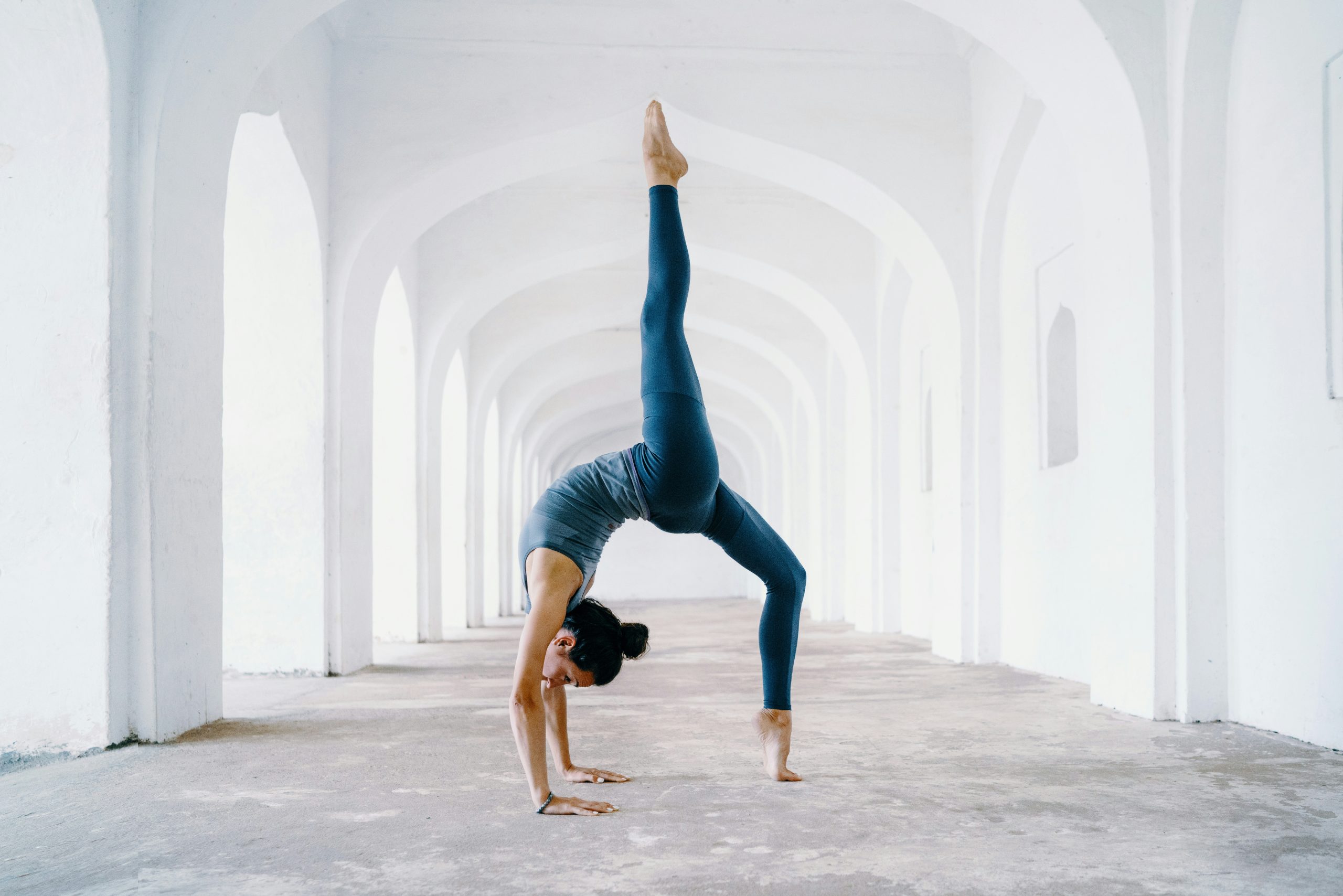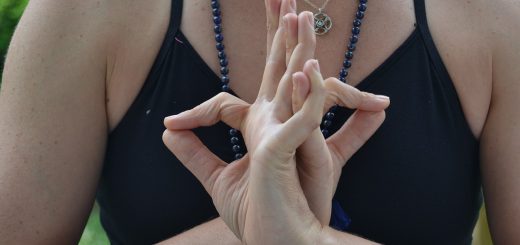Hatha Yoga: Balancing Body and Mind Through Poses

Before diving in, please note: This post is for informational purposes only. If you’d like to know more about how we approach topics, feel free to check out our friendly Disclaimer Page.
Hey there, amazing readers! 🖐️ Just a quick note: yes, we know there are a lot of ads here. Trust us, we get it—it’s not the prettiest look, but they help us keep this blog alive and kicking. Those pesky little ads cover the costs of all the behind-the-scenes magic, from hosting and tech stuff to creating content we hope you’ll love.
We’re committed to delivering quality posts, and your support (even just sticking around despite the ads) means everything to us. So, bear with us, and thanks for helping us keep the good vibes rolling. Now, on to the fun stuff! 😉
TRANSLATE BUTTON AT THE END OF THE ARTICLE
A Quick Overview
Hatha Yoga is a traditional form of yoga that focuses on balancing the body and mind through a series of physical poses, known as asanas, and breathing techniques, called pranayama.
This ancient practice aims to create harmony within the body by promoting physical strength, flexibility, mental clarity, and emotional well-being.
Hatha Yoga is a popular choice for beginners due to its gentle nature and focus on alignment and breath awareness.
In this article, we will explore the benefits of Hatha Yoga poses, how it balances the body, the connection between body and mind, various poses and their significance, as well as tips for beginners to practice safely and mindfully.
Benefits of Hatha Yoga Poses
Physical Strength: Hatha Yoga poses help strengthen muscles throughout the body, leading to improved posture and overall physical strength.
Flexibility: Regular practice of Hatha Yoga can increase flexibility in muscles and joints, reducing the risk of injury and improving range of motion.
Stress Relief: The focus on deep breathing and mindfulness in Hatha Yoga poses can help reduce stress and promote relaxation, leading to a calmer mind and improved mental well-being.
Improved Balance: Many Hatha Yoga poses require balance and concentration, helping to improve stability and coordination.
Mental Clarity: Through the practice of Hatha Yoga, individuals can improve focus, concentration, and mental clarity, leading to a sense of calm and inner peace.
How Hatha Yoga Balances Body
Alignment: Hatha Yoga emphasizes proper alignment in poses to ensure the body is balanced and supported correctly.
This attention to alignment helps prevent injuries and allows for a more effective practice.
Breath Control: The synchronization of breath with movement in Hatha Yoga poses helps create a sense of balance between the body and mind.
By focusing on the breath, practitioners can cultivate a deeper connection to their physical bodies.
Muscle Engagement: Each Hatha Yoga pose engages specific muscles in the body, promoting balance and strength throughout.
By targeting different muscle groups, practitioners can create a well-rounded practice that benefits the entire body.
Energy Flow: Hatha Yoga poses are designed to promote the flow of energy, or prana, throughout the body.
By balancing energy centers, practitioners can experience a sense of harmony and well-being.
Mindfulness: Hatha Yoga encourages practitioners to be present in the moment and fully engaged in each pose.
This mindfulness practice helps create a sense of balance between the body and mind, promoting overall well-being.
The Connection Between Body and Mind
Body Awareness: Through the practice of Hatha Yoga, individuals can develop a deeper awareness of their bodies, including posture, alignment, and movement patterns.
This increased body awareness can lead to improved physical health and well-being.
Mental Clarity: By focusing on the breath and cultivating mindfulness in Hatha Yoga poses, practitioners can experience improved mental clarity and concentration.
This mental awareness can help reduce stress and promote emotional balance.
Emotional Balance: Hatha Yoga poses can help release tension and stress stored in the body, leading to emotional release and a sense of inner peace.
By connecting the body and mind, individuals can achieve greater emotional balance.
Stress Reduction: The practice of Hatha Yoga can help reduce cortisol levels in the body, leading to decreased stress and anxiety.
By promoting relaxation and mindfulness, individuals can experience a greater sense of well-being.
Holistic Healing: Hatha Yoga is a holistic practice that addresses the connection between the body and mind, promoting healing on physical, mental, and emotional levels.
By balancing the body and mind, individuals can experience overall well-being and vitality.
Understanding Hatha Yoga Poses
Asanas: Hatha Yoga poses, or asanas, are physical postures that are designed to stretch, strengthen, and balance the body.
Each asana has specific benefits for different muscle groups and energy centers in the body.
Sequencing: The sequence of Hatha Yoga poses is important for creating a well-rounded practice.
Poses are often sequenced to warm up the body, build strength, increase flexibility, and promote relaxation.
Variations: There are many variations of Hatha Yoga poses to accommodate different levels of practitioners.
Beginners can start with basic poses and gradually progress to more advanced variations as they build strength and flexibility.
Hold Time: Holding Hatha Yoga poses for a certain amount of time allows the body to stretch and strengthen effectively.
Practitioners can focus on alignment, breath, and mindfulness while holding poses to maximize benefits.
Intention: Each Hatha Yoga pose is practiced with intention, focusing on the breath, alignment, and mindfulness.
By approaching poses with awareness and intention, practitioners can deepen their practice and experience greater benefits.
Importance of Proper Alignment
Prevents Injury: Proper alignment in Hatha Yoga poses helps prevent strain on muscles and joints, reducing the risk of injury during practice.
Optimizes Benefits: When the body is correctly aligned in poses, practitioners can experience the full benefits of each posture, including increased flexibility, strength, and balance.
Supports Muscles: Alignment supports the muscles in the body, allowing them to work more effectively and efficiently during practice.
This support can lead to improved posture and overall physical health.
Eases Discomfort: Correct alignment can help alleviate discomfort or pain that may arise during practice, allowing for a more comfortable and enjoyable experience.
Mind-Body Connection: Proper alignment fosters a deeper connection between the body and mind, promoting mindfulness and awareness in each pose.
By focusing on alignment, practitioners can cultivate a deeper sense of presence and connection.
Breathing Techniques in Hatha Yoga
Deep Breathing: Hatha Yoga emphasizes deep, diaphragmatic breathing to promote relaxation and mindfulness during practice.
Deep breathing can help calm the mind and reduce stress.
Ujjayi Breath: The Ujjayi breath, or "ocean breath," is a common breathing technique used in Hatha Yoga.
This breath involves constricting the back of the throat to create a soft, audible sound, helping to focus the mind and regulate breath.
Breath Awareness: Practitioners are encouraged to focus on the breath throughout Hatha Yoga poses, using it as a guide for movement and mindfulness.
Breath awareness can help synchronize movement with breath, creating a sense of flow in practice.
Pranayama: Pranayama, or breath control, is a key component of Hatha Yoga practice.
Various pranayama techniques can be incorporated to enhance the benefits of poses and promote overall well-being.
Calms the Nervous System: Deep, mindful breathing in Hatha Yoga poses can help calm the nervous system, reducing stress, anxiety, and promoting relaxation.
By focusing on the breath, practitioners can create a sense of calm and inner peace.
Enhancing Flexibility and Strength
Dynamic Stretching: Hatha Yoga poses involve dynamic stretching of muscles, promoting flexibility and range of motion.
Dynamic stretching can help prevent injury and improve overall flexibility.
Strength Building: Many Hatha Yoga poses require strength and stability in various muscle groups, leading to improved physical strength and muscle tone.
Balanced Approach: Hatha Yoga focuses on a balanced approach to flexibility and strength, ensuring that practitioners develop both qualities equally.
This balanced approach can lead to a more well-rounded and effective practice.
Progressive Practice: As practitioners advance in their Hatha Yoga practice, they can gradually increase the intensity and duration of poses to enhance flexibility and strength.
Progression allows for continued growth and improvement in physical abilities.
Mindful Movement: By approaching Hatha Yoga poses with mindfulness and awareness, practitioners can enhance flexibility and strength while reducing the risk of injury.
Mindful movement promotes safe, effective practice and optimal results.
Promoting Relaxation and Stress Relief
Restorative Poses: Hatha Yoga includes restorative poses that promote relaxation and stress relief.
These poses often involve gentle stretching and deep breathing to calm the mind and body.
Mindfulness Practice: Through the practice of mindfulness in Hatha Yoga poses, practitioners can reduce stress and promote relaxation.
Mindfulness encourages present-moment awareness and helps release tension held in the body.
Breath Awareness: Focusing on the breath in Hatha Yoga poses can help calm the nervous system and promote relaxation.
Deep, mindful breathing can create a sense of calm and tranquility in both body and mind.
Savasana: Savasana, or Corpse Pose, is a key relaxation pose in Hatha Yoga that allows practitioners to rest and integrate the benefits of their practice.
Savasana promotes deep relaxation and stress relief.
Stress Reduction: Hatha Yoga poses can help reduce stress by releasing physical tension in the body and calming the mind.
By incorporating relaxation techniques into practice, individuals can experience greater peace and well-being.
Incorporating Meditation in Hatha Yoga
Mindful Meditation: Hatha Yoga often includes meditation practices to cultivate mindfulness and awareness.
Meditation can help quiet the mind, reduce stress, and enhance overall well-being.
Breath Meditation: Practitioners may focus on the breath during meditation in Hatha Yoga, using it as a anchor for the mind and promoting a sense of calm and clarity.
Visualization: Visualization techniques may be incorporated into meditation practices in Hatha Yoga to create a sense of peace, relaxation, and inner harmony.
Mantra Meditation: Mantras, or sacred sounds, may be used in meditation to focus the mind and promote spiritual growth.
Mantra meditation can enhance concentration and deepen the meditative experience.
Integration: By incorporating meditation practices into Hatha Yoga, practitioners can cultivate a deeper connection to their inner selves, promote self-awareness, and enhance overall well-being.
Tips for Beginners in Hatha Yoga
Start Slow: Beginners should start with simple poses and gradually progress to more advanced poses as they build strength and flexibility.
Listen to Your Body: Pay attention to how your body feels in each pose and adjust as needed.
It’s important to honor your body’s limitations and practice with awareness.
Focus on Alignment: Proper alignment is key in Hatha Yoga poses to prevent injury and maximize benefits.
Pay attention to alignment cues from instructors and use props as needed.
Breathe Mindfully: Focus on deep, diaphragmatic breathing throughout your practice to promote relaxation and mindfulness.
Use the breath as a guide for movement and flow.
Be Patient: Hatha Yoga is a practice that takes time to master.
Be patient with yourself, stay consistent with your practice, and enjoy the journey of self-discovery and growth.
Practicing Hatha Yoga Safely and Mindfully
Warm Up: Always start your Hatha Yoga practice with a gentle warm-up to prepare your body for movement and prevent injury.
Use Props: Props such as blocks, straps, and bolsters can help support your practice and improve alignment in poses.
Use props as needed to enhance your practice.
Modify Poses: If a pose feels uncomfortable or causes pain, don’t force yourself into it.
Modify the pose or use props to make it more accessible and safe for your body.
Stay Present: Practice mindfulness in each pose by focusing on the breath, alignment, and sensations in the body.
Stay present and fully engaged in your practice to maximize benefits.
Rest and Recover: Listen to your body’s signals and take breaks as needed during your practice.
Allow yourself time to rest and recover to prevent burnout and injury.
Conclusion
Hatha Yoga offers a holistic approach to health and well-being by balancing the body and mind through physical poses, breathing techniques, and mindfulness practices.
By incorporating Hatha Yoga into your daily routine, you can experience increased physical strength, flexibility, mental clarity, and emotional balance.
The benefits of Hatha Yoga poses extend beyond the physical body, promoting relaxation, stress relief, and overall well-being.
Whether you are a beginner or an experienced practitioner, practicing Hatha Yoga safely and mindfully can lead to a greater sense of harmony and vitality in your life.
Embrace the practice of Hatha Yoga and discover the transformative power of uniting body and mind through the art of asanas and pranayama.

The Enlightenment Journey is a remarkable collection of writings authored by a distinguished group of experts in the fields of spirituality, new age, and esoteric knowledge.
This anthology features a diverse assembly of well-experienced authors who bring their profound insights and credible perspectives to the forefront.
Each contributor possesses a wealth of knowledge and wisdom, making them authorities in their respective domains.
Together, they offer readers a transformative journey into the realms of spiritual growth, self-discovery, and esoteric enlightenment.
The Enlightenment Journey is a testament to the collective expertise of these luminaries, providing readers with a rich tapestry of ideas and information to illuminate their spiritual path.
Our Diverse Expertise 🌟
While our primary focus is on spirituality and esotericism, we are equally passionate about exploring a wide range of other topics and niches 🌍📚. Our experienced team is dedicated to delivering high-quality, informative content across various subjects ✨.
To ensure we provide the most accurate and valuable insights, we collaborate with trusted experts in their respective domains 🧑🏫👩🏫. This allows us to offer well-rounded perspectives and knowledge to our readers.
Our blog originally focused on spirituality and metaphysics, but we’ve since expanded to cover a wide range of niches. Don’t worry—we continue to publish a lot of articles on spirituality! Frequently visit our blog to explore our diverse content and stay tuned for more insightful reads.






